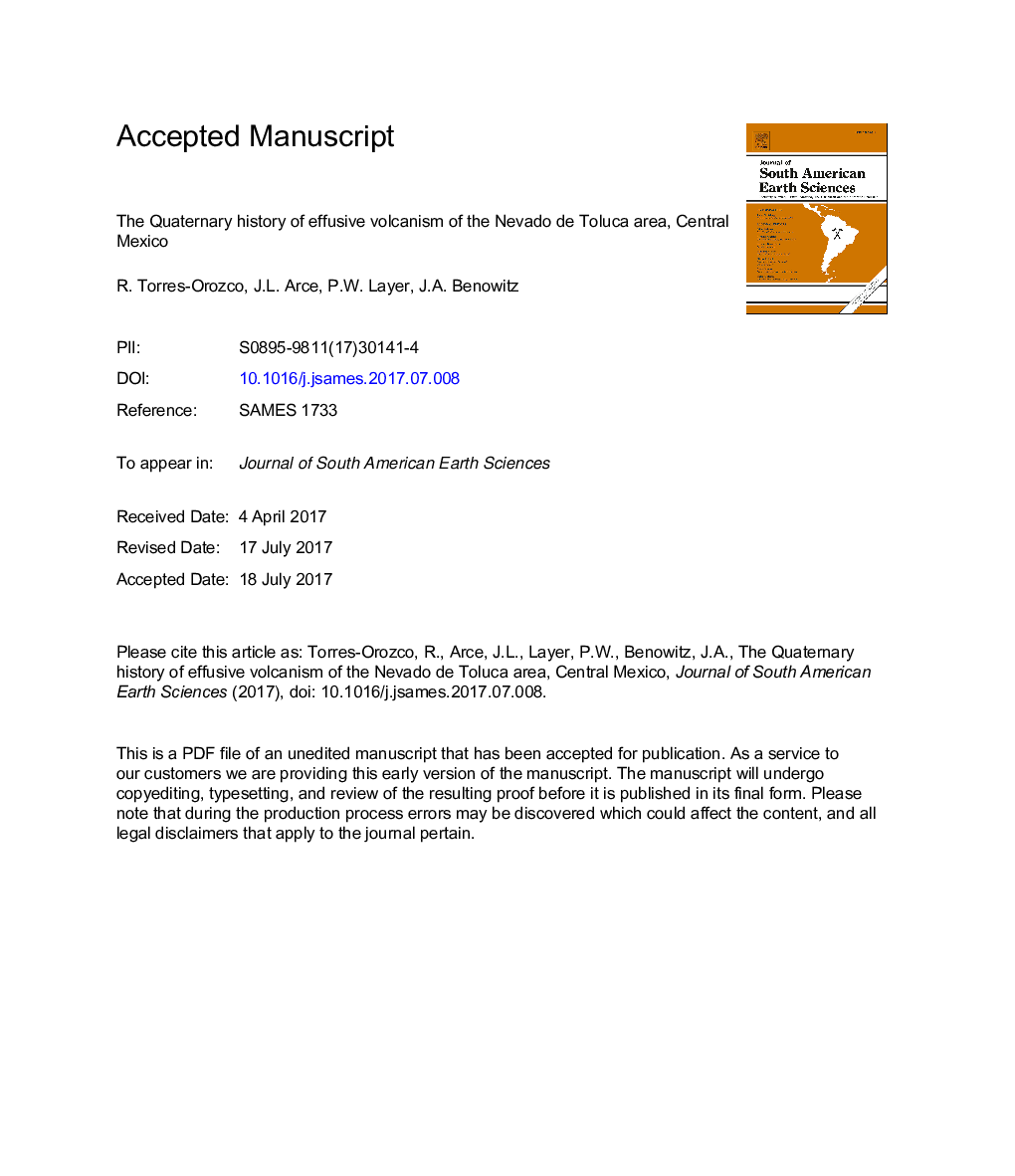| Article ID | Journal | Published Year | Pages | File Type |
|---|---|---|---|---|
| 5780389 | Journal of South American Earth Sciences | 2017 | 71 Pages |
Abstract
Andesite and dacite lava flows and domes, and intermediate-mafic cones from the Nevado de Toluca area were classified into five groups using field data and 40Ar/39Ar geochronology constraints. Thirty-four lava units of diverse mineralogy and whole-rock major-element geochemistry, distributed between the groups, were identified. These effusive products were produced between â¼1.5 and â¼0.05 Ma, indicating a mid-Pleistocene older-age for Nevado de Toluca volcano, coexisting with explosive products that suggest a complex history for this volcano. A â¼0.96 Ma pyroclastic deposit attests for the co-existence of effusive and explosive episodes in the mid-Pleistocene history. Nevado de Toluca initiated as a composite volcano with multiple vents until â¼1.0 Ma, when the activity began to centralize in an area close to the present-day crater. The modern main edifice reached its maximum height at ca. 50 ka after bulky, spiny domes erupted in the current summit of the crater. Distribution and geochemical behavior in major elements of lavas indicate a co-magmatic relationship between different andesite and dacite domes and flows, although unrelated to the magmatism of the monogenetic volcanism. Mafic-intermediate magma likely replenished the system at Nevado de Toluca since ca. â¼1.0 Ma and contributed to the eruption of new domes, cones, as well as effusive-explosive activity. Altogether, field and laboratory data suggest that a large volume of magma was ejected around 1 Ma in and around the Nevado de Toluca.
Related Topics
Physical Sciences and Engineering
Earth and Planetary Sciences
Earth and Planetary Sciences (General)
Authors
R. Torres-Orozco, J.L. Arce, P.W. Layer, J.A. Benowitz,
